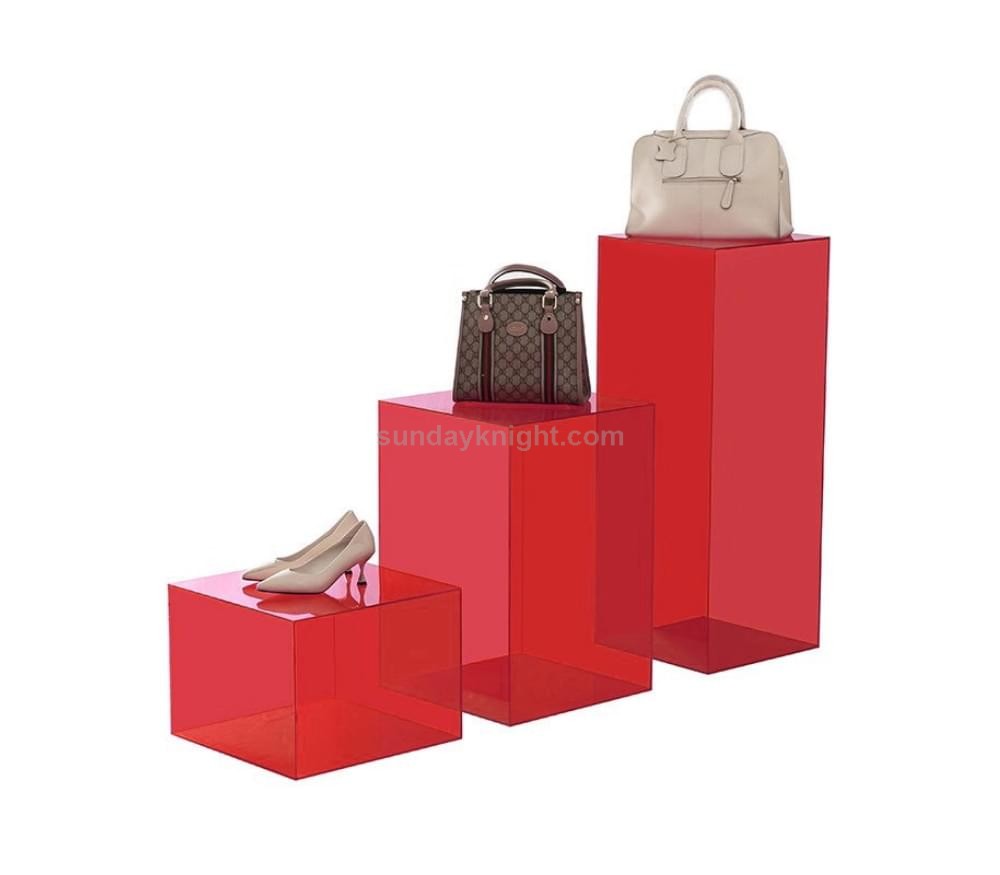Art exhibitions are a vital part of the art world, providing a platform for artists to showcase their work and for audiences to engage with art in a curated environment. Among the various materials used in these exhibitions, acrylic display products have gained significant popularity. Known for their versatility, durability, and aesthetic appeal, acrylic displays enhance the presentation of artworks, making them a preferred choice for galleries and museums. This article explores the various applications of acrylic display products in art exhibitions and how they contribute to the overall experience of both the artist and the viewer.



Versatility and Customization
Acrylic display products are incredibly versatile, offering numerous options for customization. Whether it’s acrylic stands, cases, frames, or pedestals, these products can be tailored to fit the specific needs of any exhibition. The transparency of acrylic allows for unobstructed views of the artwork, ensuring that the focus remains on the art itself rather than the display mechanism. This is particularly beneficial for three-dimensional works such as sculptures or intricate installations, where visibility from multiple angles is crucial.
The ability to customize acrylic displays means that they can be designed to complement the aesthetic of the exhibition. For instance, minimalist displays can be used in modern art exhibitions to create a clean, unobtrusive environment, while more elaborate designs might be employed in thematic exhibitions to enhance the narrative of the artwork. The flexibility of acrylic as a material allows curators to experiment with different forms and structures, ensuring that the display enhances rather than detracts from the viewer’s experience.
Durability and Protection
Acrylic is renowned for its durability, making it an ideal choice for display products in art exhibitions. Unlike glass, acrylic is shatter-resistant, reducing the risk of damage to both the display and the artwork. This is particularly important in high-traffic exhibitions or those featuring delicate, valuable pieces. Acrylic display cases provide a secure environment for artworks, protecting them from dust, moisture, and physical contact while allowing viewers to appreciate the art without barriers.
Moreover, acrylic has UV-filtering properties that can help protect artworks from harmful ultraviolet rays, which can cause fading and deterioration over time. This is especially important for exhibitions featuring photographs, textiles, and other light-sensitive materials. By using acrylic display products, curators can ensure that artworks are not only presented beautifully but also preserved for future generations.
Enhancing Viewer Engagement
The design of an exhibition plays a crucial role in how viewers interact with and perceive the artworks. Acrylic display products contribute to creating an engaging and immersive environment. Their clarity and sleek design allow for a seamless viewing experience, enabling visitors to focus entirely on the art. Acrylic stands and pedestals can be used to position artworks at optimal viewing heights, enhancing visibility and accessibility.
Interactive displays, where viewers are encouraged to engage with the art in a more tactile manner, can also benefit from acrylic products. For example, acrylic touch screens or information panels can be integrated into the exhibition to provide additional context or interactive elements without detracting from the visual appeal of the artworks. This integration of technology and art through acrylic displays can create a more dynamic and educational experience for visitors.
Aesthetic Appeal
Acrylic display products are not only functional but also aesthetically pleasing. Their modern, sleek appearance complements a wide range of artistic styles and exhibition themes. The polished finish of acrylic gives it a high-end look, adding a touch of sophistication to any exhibition. When used in framing, acrylic can provide a clear, non-reflective surface that enhances the colors and details of the artwork, offering a superior viewing experience compared to traditional glass frames.
Additionally, acrylic can be easily fabricated into various shapes and sizes, allowing for innovative display solutions. Floating frames, for example, create the illusion that the artwork is suspended in mid-air, adding an element of intrigue and wonder to the exhibition. Such creative uses of acrylic can transform the presentation of art, making it not only a visual but also an experiential delight.
Conclusion
The application of acrylic display products in art exhibitions offers numerous benefits, from versatility and durability to aesthetic appeal and enhanced viewer engagement. As the art world continues to evolve, the role of acrylic in creating effective and captivating displays becomes increasingly important. By incorporating acrylic products into their exhibitions, curators can ensure that artworks are presented in the best possible light, protected from harm, and appreciated by audiences in a meaningful way. Whether showcasing contemporary pieces or timeless classics, acrylic display products provide the perfect blend of functionality and elegance, making them an indispensable tool in the art exhibition landscape.
